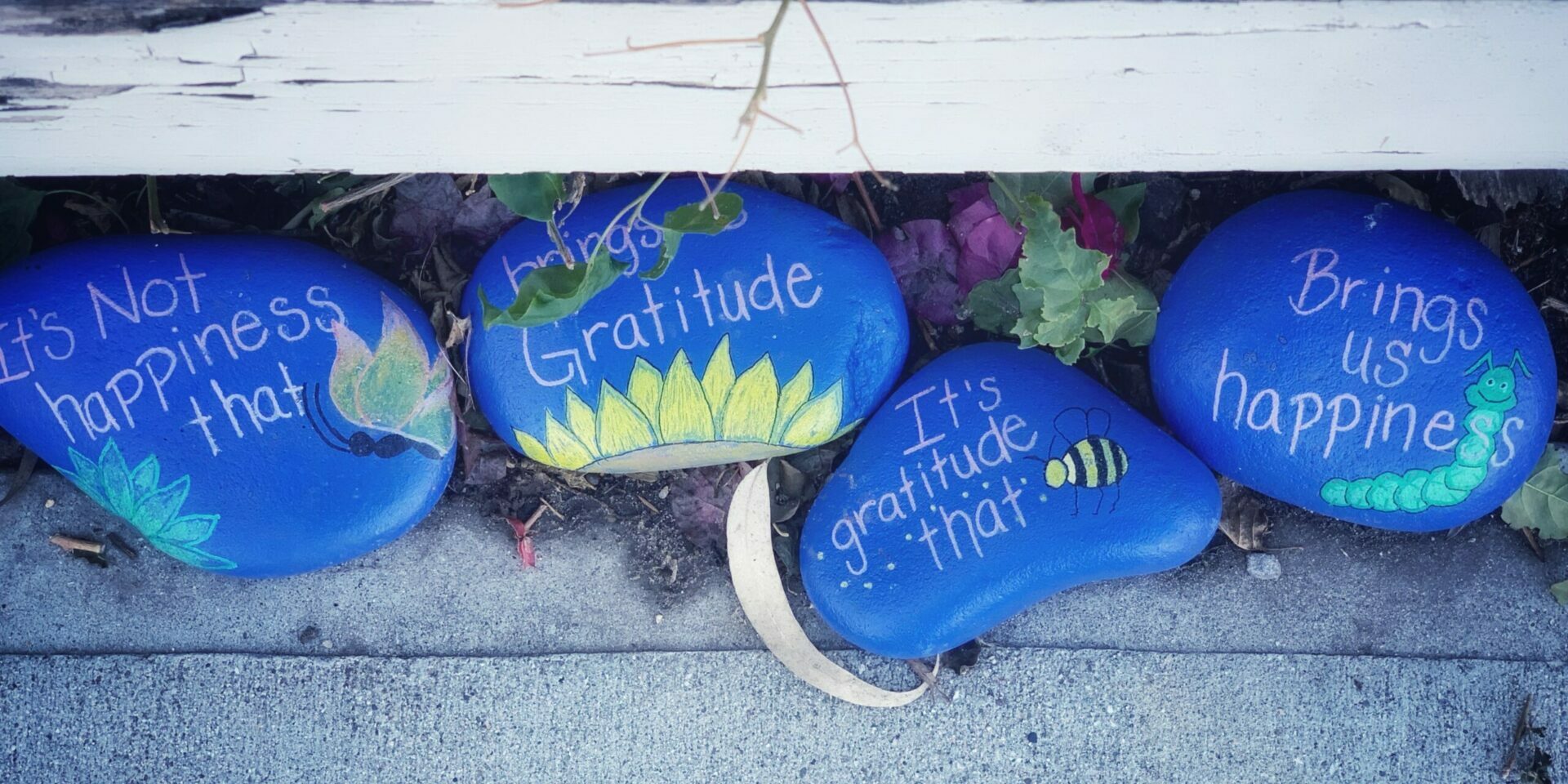Gratitude has the remarkable ability to transform our mindset, boost our resiliency in the face of change, and help us, our teams, and our organizations achieve unstoppable momentum. Yet, in the busyness of our day-to-day lives—and sometimes an overwhelming world that never slows down—we often forget to take the time to intentionally practice gratitude. Today, I want to help you begin changing that.
Because now, more than ever, leaders must embrace the power of gratitude—for the health and well-being of themselves, those they lead, and the success of their organizations.
Daily gratitude has a profound effect on our well-being, both personally and professionally.
There are so many benefits to taking time for intentional daily gratitude. Gratitude has been shown to strengthen overall mental health, lower your blood pressure, and improve your ability to handle stress. Studies have also shown that practicing gratitude before going to bed can even improve both the amount of sleep you get and the quality of your sleep. And I know we can all use a little more rest these days!
Why does it work? Because the value and power of gratitude is that it allows you to shift your perspective. It helps you dig deep and look for good.
You may be thinking, “That all sounds great, Kim. But gratitude isn’t a must-have leadership skill or business strategy.”
I get it. Gratitude can feel intangible. And at first glance, it feels more New Age than bottom line-boosting—until you consider these professional benefits of the practice.
Gratitude has a significant impact on employee engagement and retention. According to study by Gallup and Workhuman, employees who feel recognized are 56% less likely to seek out other job opportunities.
For organizations struggling to keep their top talent, that’s a game-changer! And that’s not all.
The study also noted that well-recognized employees are:
- 4x as likely show up engaged and ready to work
- 3x as likely to feel committed to their organization
- 5x as likely to recognize growth opportunities within their organization
Gratitude, when intentionally cultivated, can transform your organization, department by department, and team by team, building unstoppable momentum along the way.
Cultivating gratitude can also improve social relationships (crucial, in a team environment), increase employee productivity, and can even strengthen resilience in the face of change, challenges, and difficulties. And that’s the kind of impact that really moves the needle.
Grateful leaders understand the value of what they have—and inspire resilient teams to recognize the same.
Leaders who intentionally practice daily gratitude recognize the value in the teams they lead. They see the positive in each individual, and they naturally attract good outcomes and lasting success. Plus, they inspire those around them to do the same. That’s what makes gratitude so transformational.
And yet, in one workplace study, an alarming 35% of employees reported that their managers never thanked them. To me, that’s a massive momentum-building opportunity completely overlooked.
Gratitude isn’t about being a stronger leader or squeezing out an extra ounce of productivity. It’s a mindset that creates a thriving environment where people feel valued, seen, and cared for, growth is fostered, and every good deed goes noticed.
How can you develop daily gratitude, and strengthen your team’s resilience in the process?
Here are a few fundamental keys I believe form the foundation of intentionally grateful living at work and at home:
- Being present in the moment.
- Appreciating small gestures, like a team member arriving early or offering to help a peer.
- Saying “thank you” often and generously.
- Reframing change to highlight the silver lining.
- Cherishing the gift of life’s ups and downs.
- Taking time to see the big picture and the part you play in it.
It’s important to recognize that these fundamentals don’t come naturally to every leader. It’s not easy to stay present when you’re facing difficulties and deadlines, or unrelenting pressure.. And no matter how many times you experience it, change is rarely comfortable.
But by intentionally identifying opportunities to practice your gratitude—and I say practice because it does take work!—you can begin to cultivate and strengthen your gratitude rhythm and your natural resiliency in the process.
When you’re ready to start honing your daily gratitude practice (and soon-to-be habit!), I have a few practical suggestions to try, both on your own, and with your team.
Personal gratitude practices:
Keep a gratitude journal. A couple of times each week, take a moment to jot down a few positives from your day. Recording even simple moments, like catching every green light on the way to work, or a kind word from a coworker that morning, helps us remember the good in every day.
Download the Three Good Things App. I discovered the Three Good Things app a few years ago, and it has been an important part of my personal gratitude practice ever since. The (free) app is like a digital gratitude journal and positivity reminder all-in-one—prompting you to share three good things that happen each day. Though this habit seems small, let me assure you, it can help you see the world, and the good things in it, in a whole new way.
Team-based gratitude practices:
Express gratitude to one another. Don’t wait for special occasions to thank those you care about. Encourage your team to take a few minutes every day to send a grateful text or email, leave a handwritten note on a coworker’s desk, or grab a stamp and write a good ol’ fashioned letter. You can even set aside dedicated time for gratitude each week, giving your team an intentional moment to recognize one another. A little gratitude, especially in a collaborative environment, can go a long way in brightening someone’s day.
Take a gratitude walk. If the weather is nice, invite your team to step outside and take note of what you sense. Express gratitude for the soft breeze, the smell of cut grass, the birds chirping in a nearby tree, and the warm sun on your face. Engage in positive conversations, and take the opportunity to recognize what you value in one another. When you notice the little things and intentionally look for the good in others, you can’t help but be grateful.
Gratitude is a welcome invitation to embrace the beautiful moments and stand firm through the tough ones. And while it may not be your natural leadership style, anyone can develop a powerful sense of gratitude—and incredible resilience as a result.
I want to know: How has gratitude helped you unlock resiliency and unstoppable momentum, personally or professionally? Connect with me and tell me about it!
Are you ready to inspire, engage, and empower your team? The driving force behind the Unstoppable Momentum Movement, Kim Becking is changing the way we think about change and resilience. An award-winning motivational keynote speaker, consultant and change expert, Kim has helped Fortune 100 companies and organizations around the world empower their leaders, teams, and communities to be more adaptable, more resilient, and better equipped to own what’s now and embrace what’s next with a deep breath and a big cup of Bring It On. Follow Kim on LinkedIN and subscribe to her blog for more tips and strategies to ignite Unstoppable Momentum.





